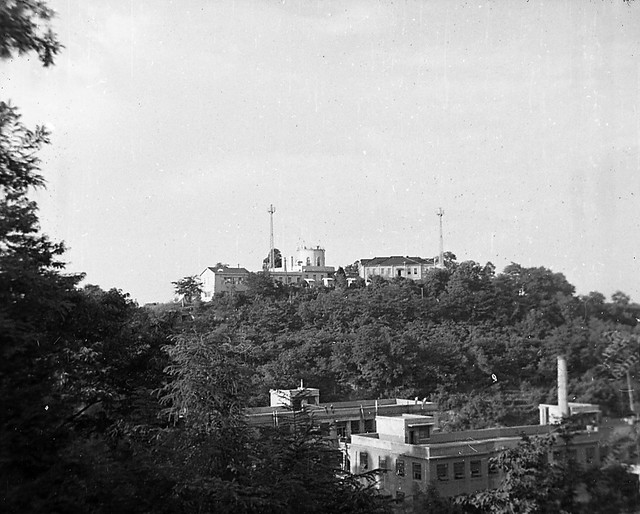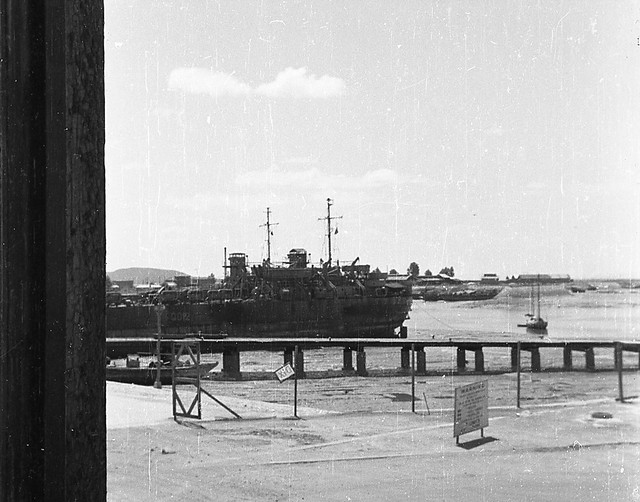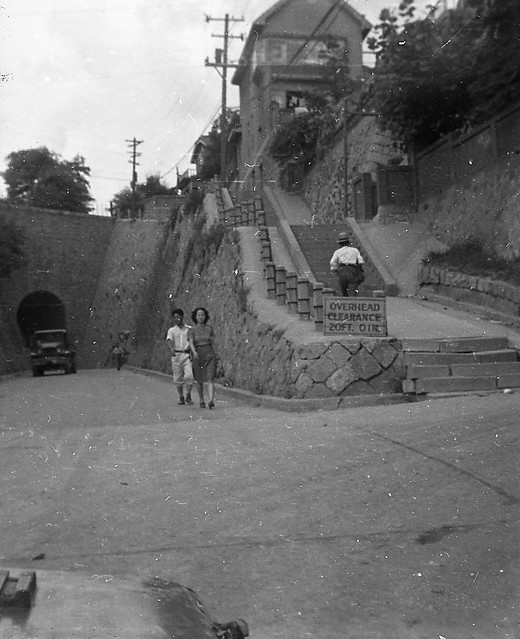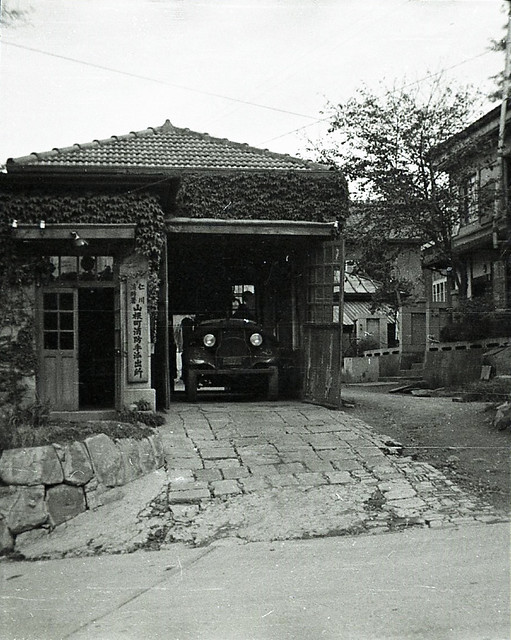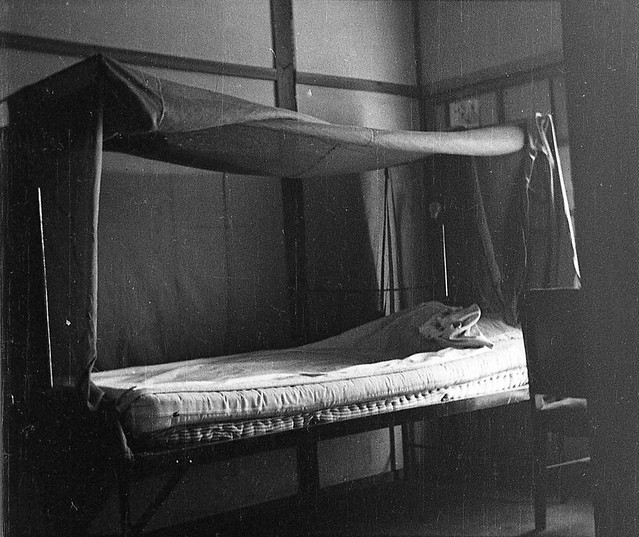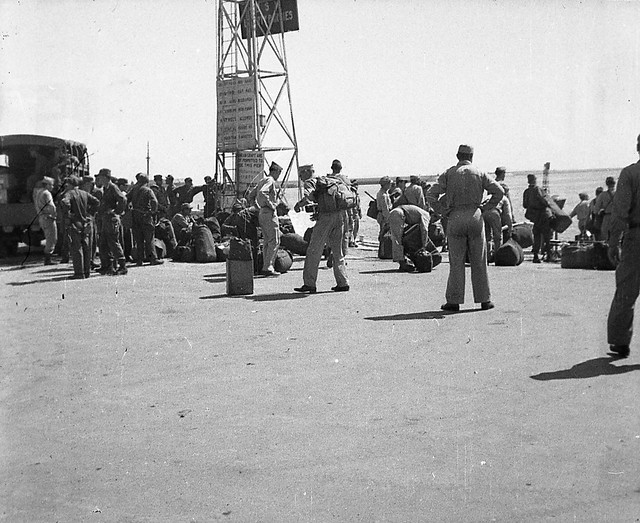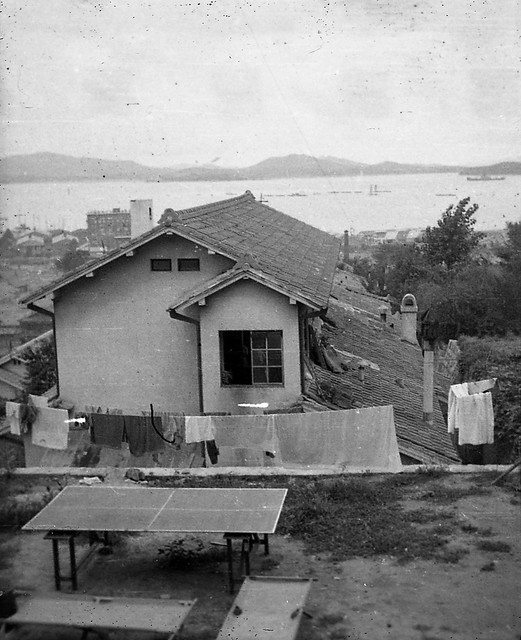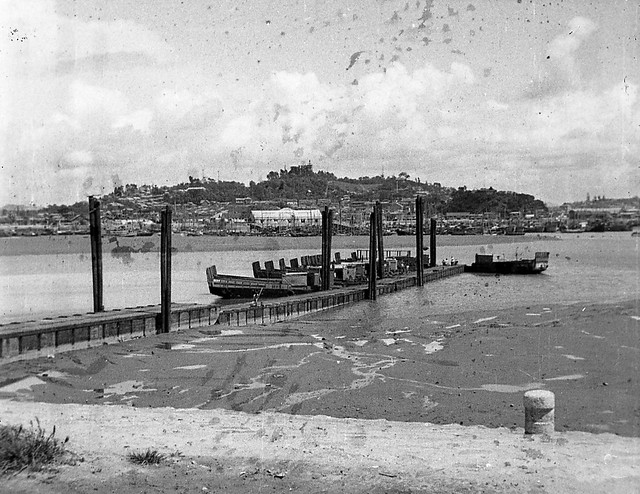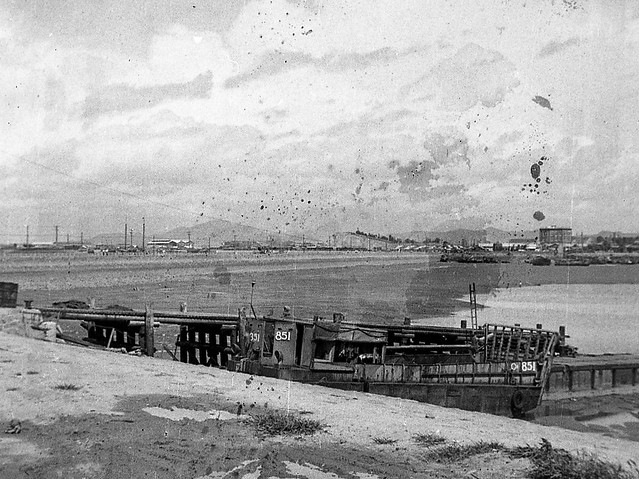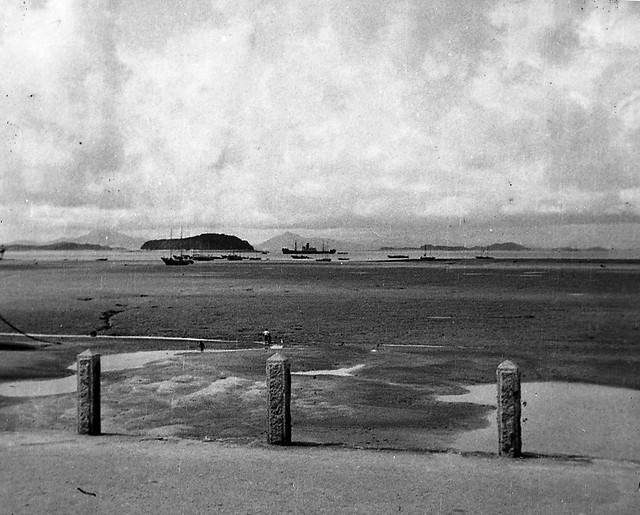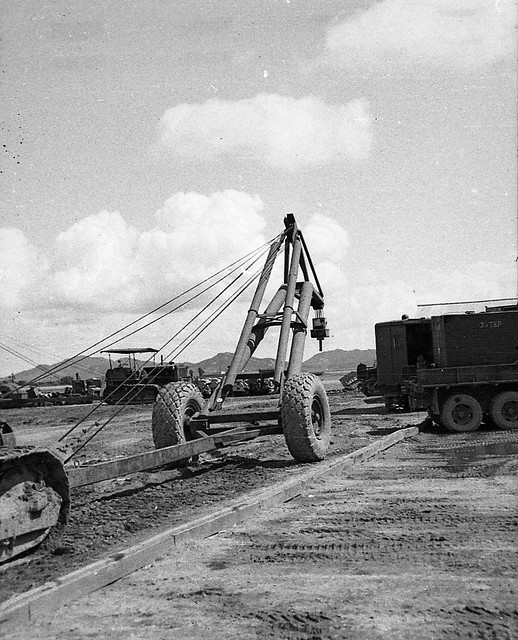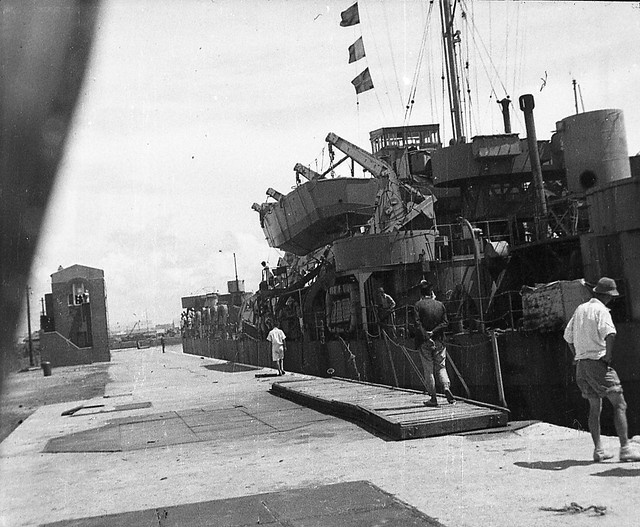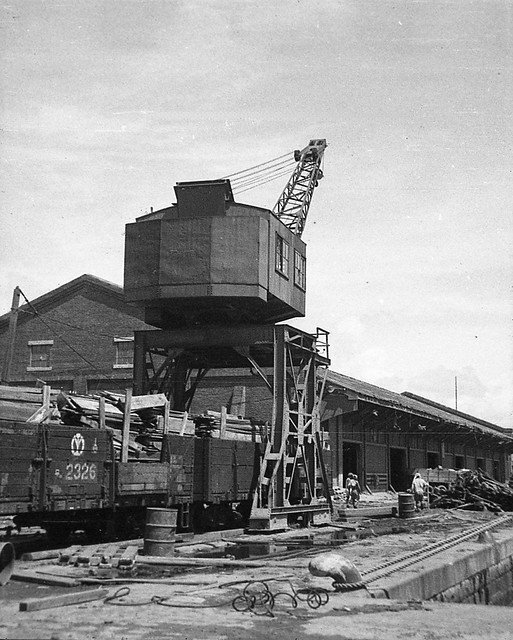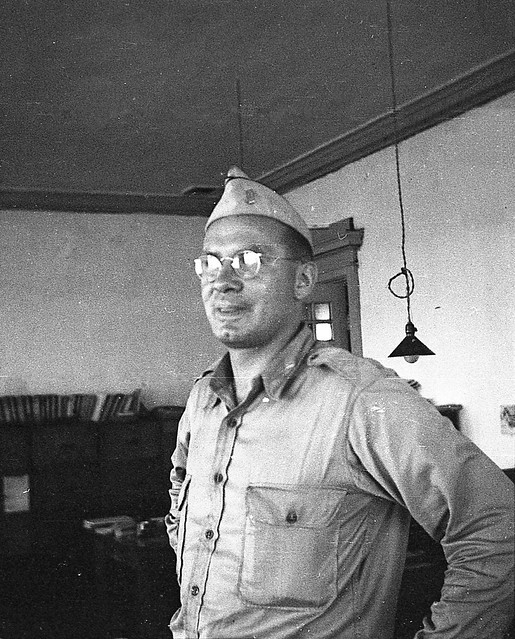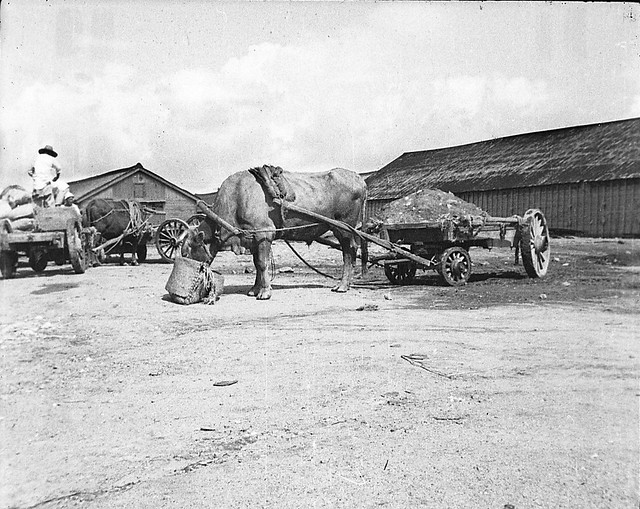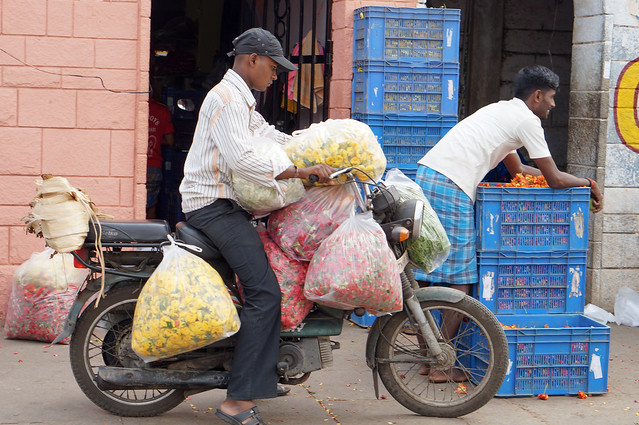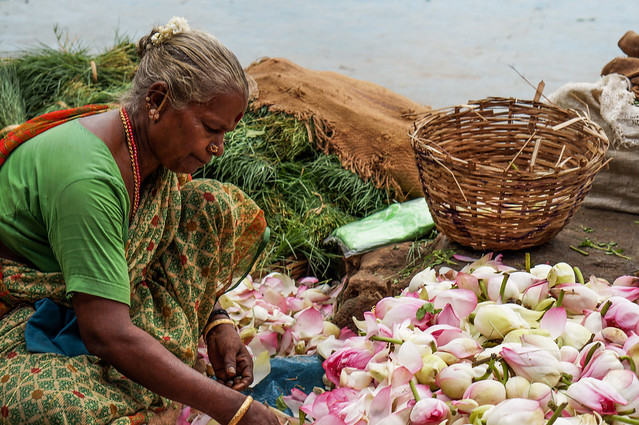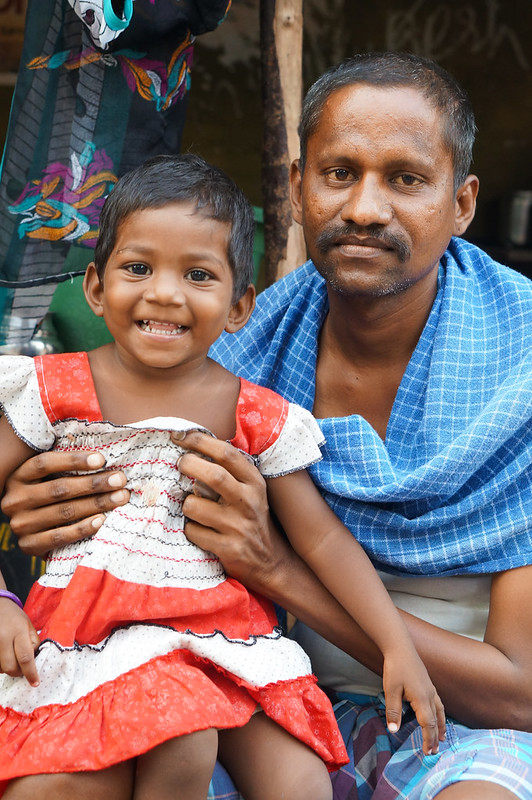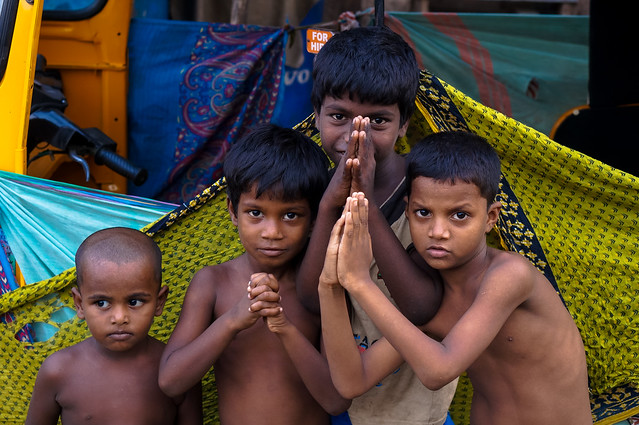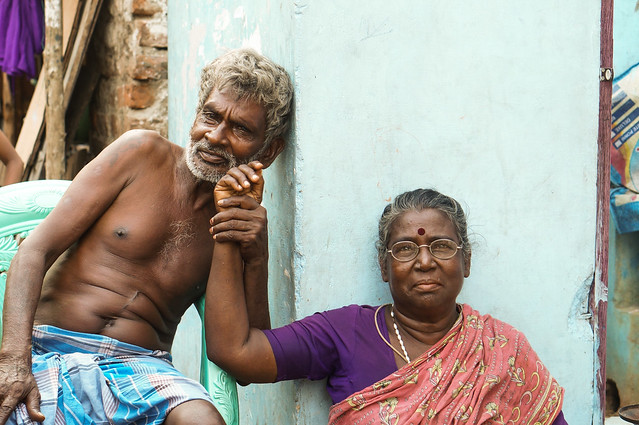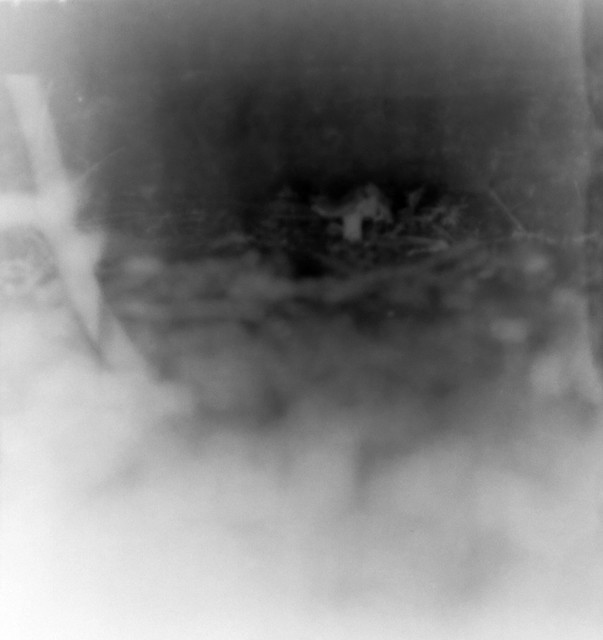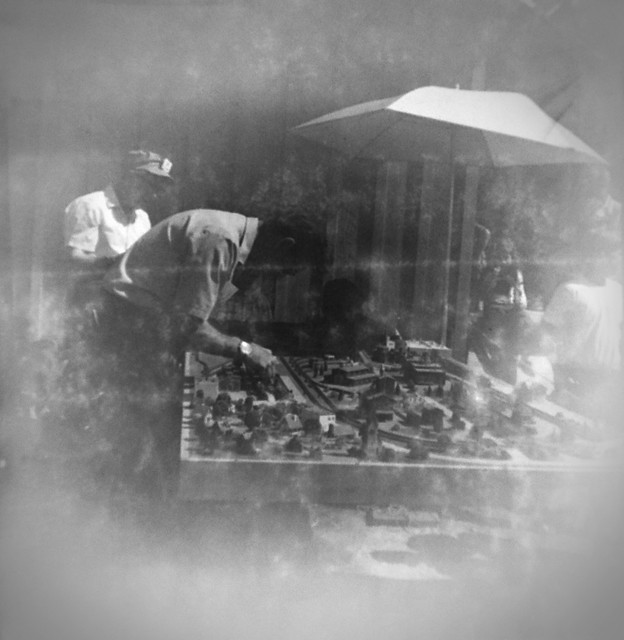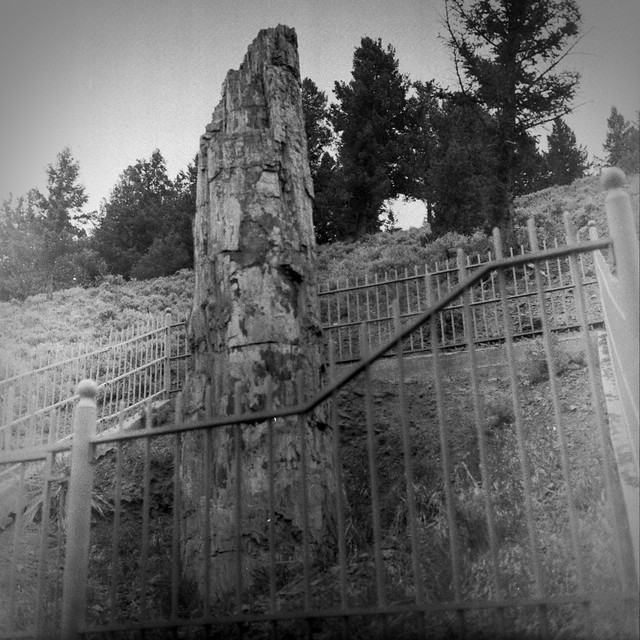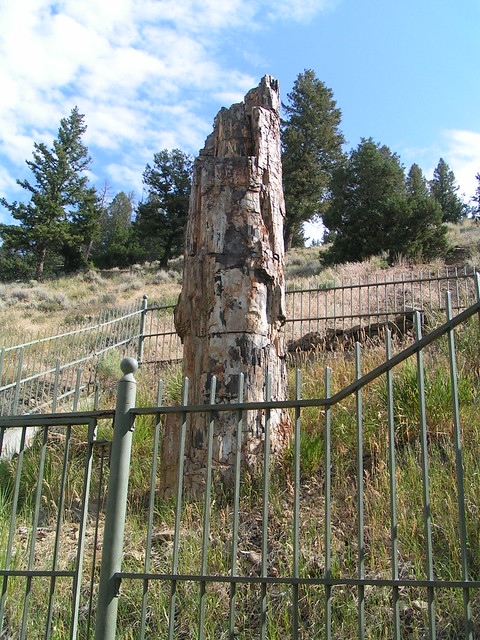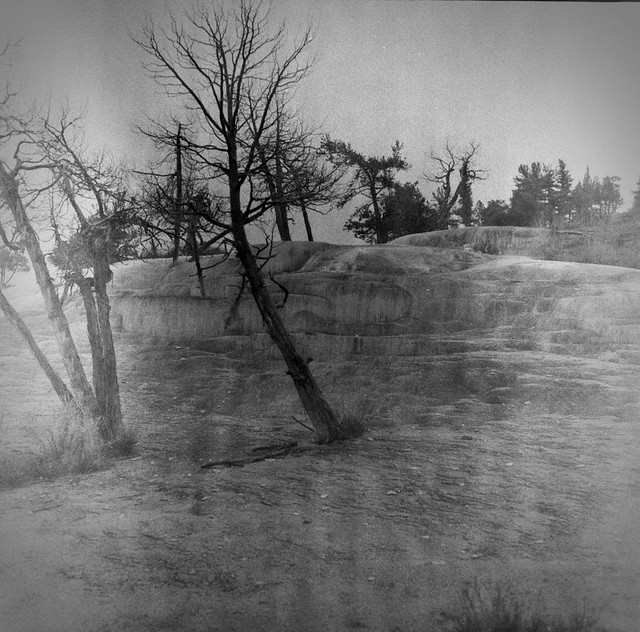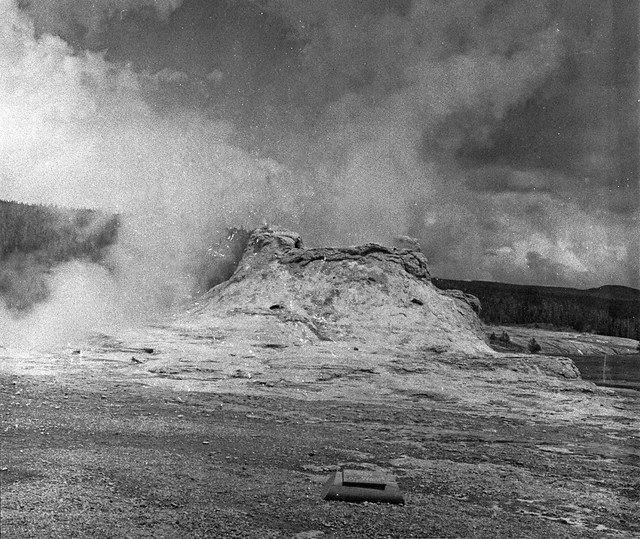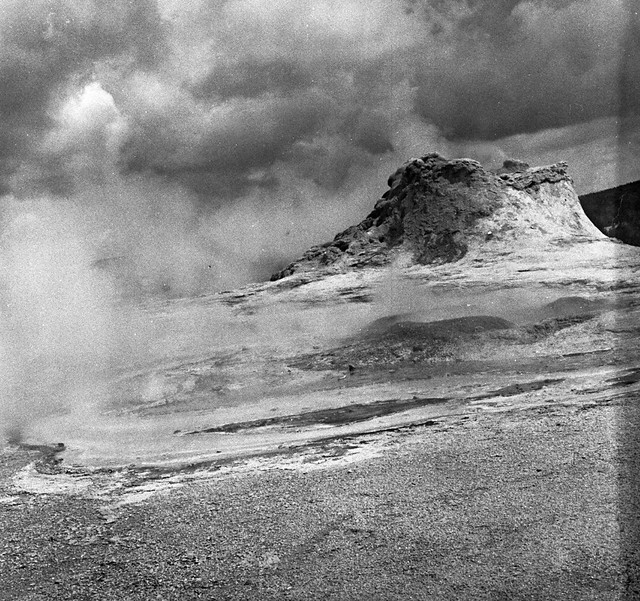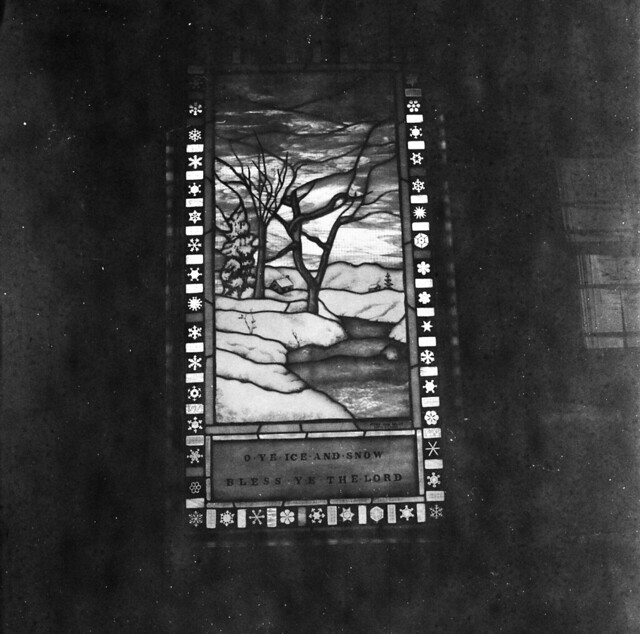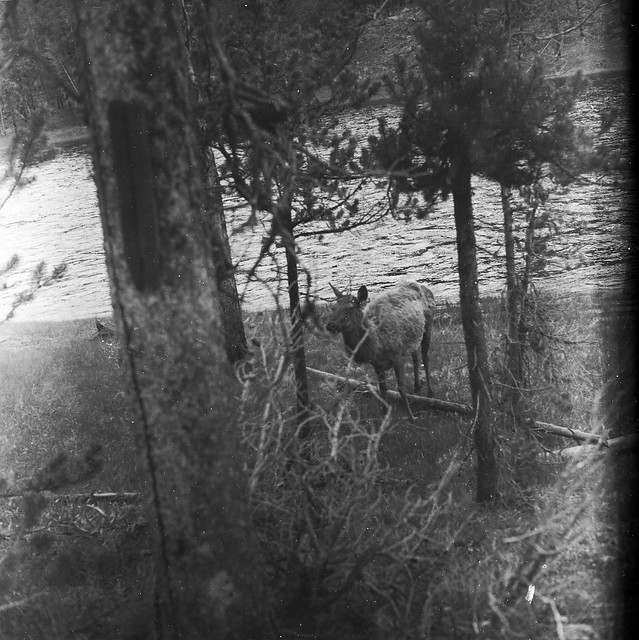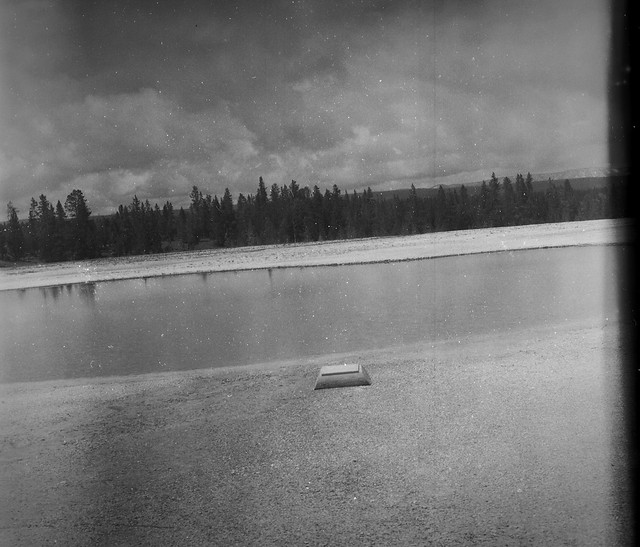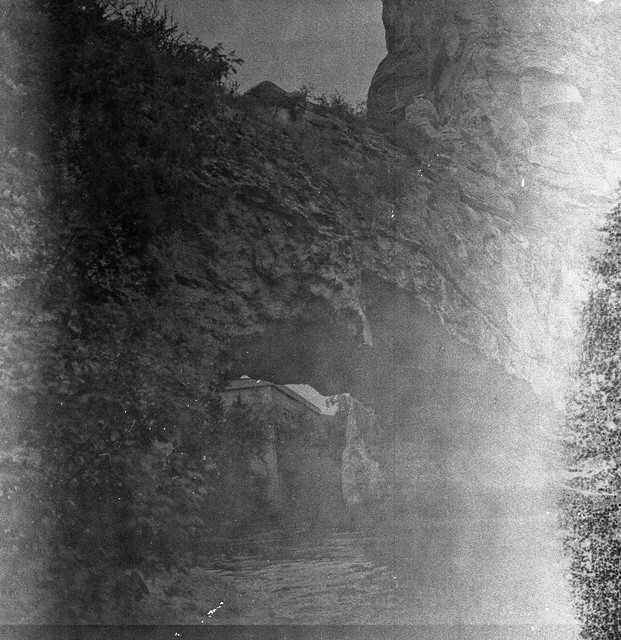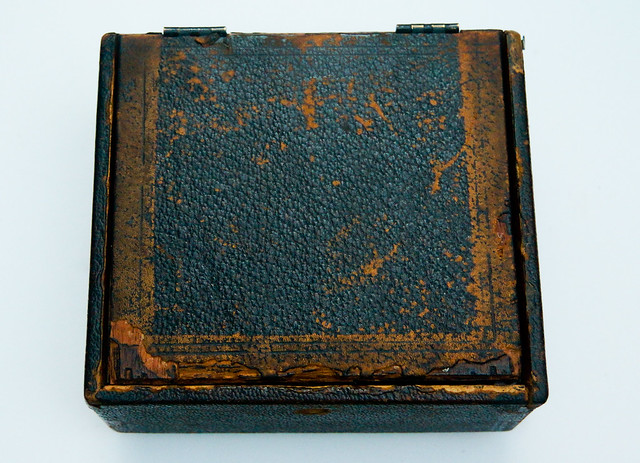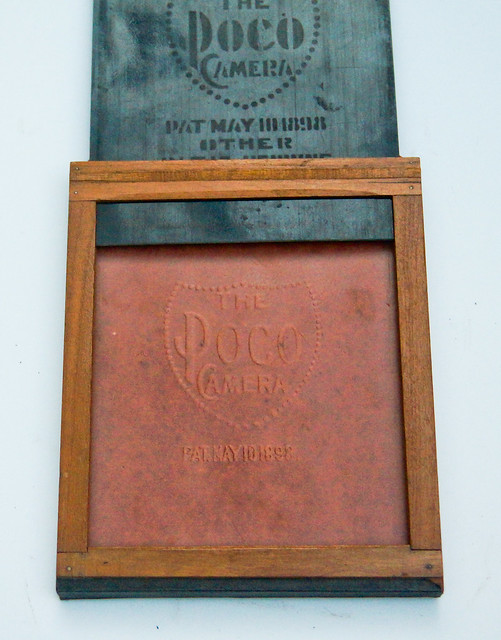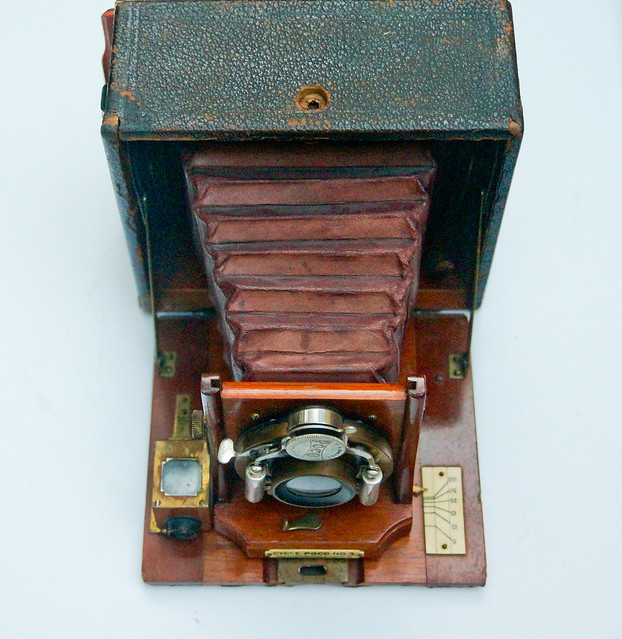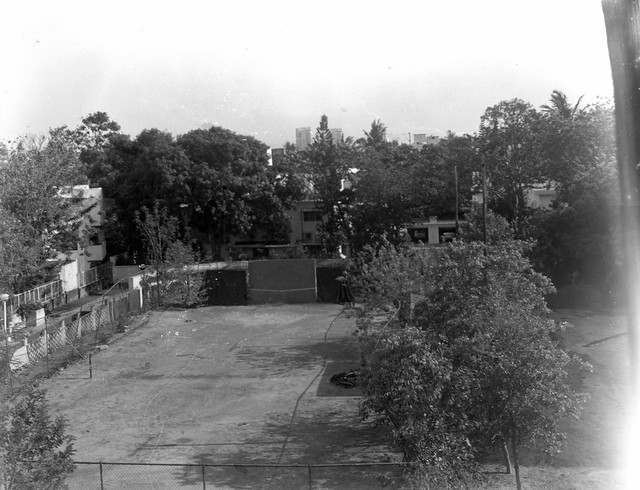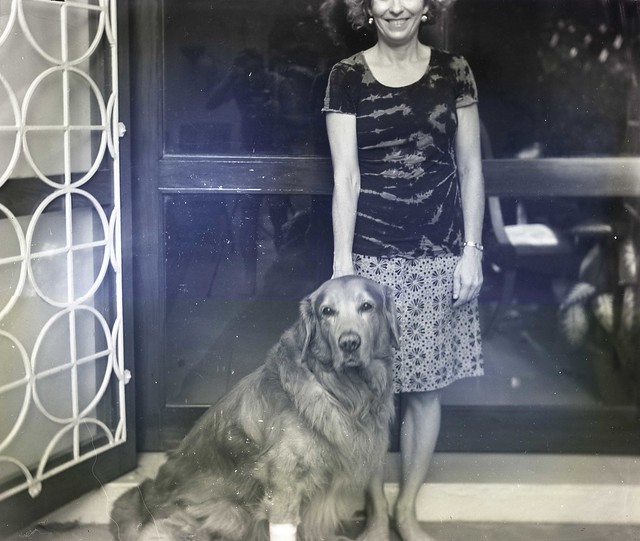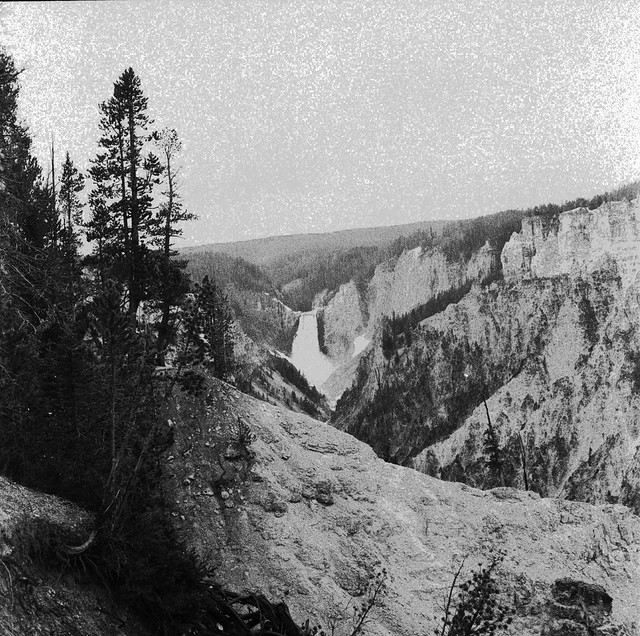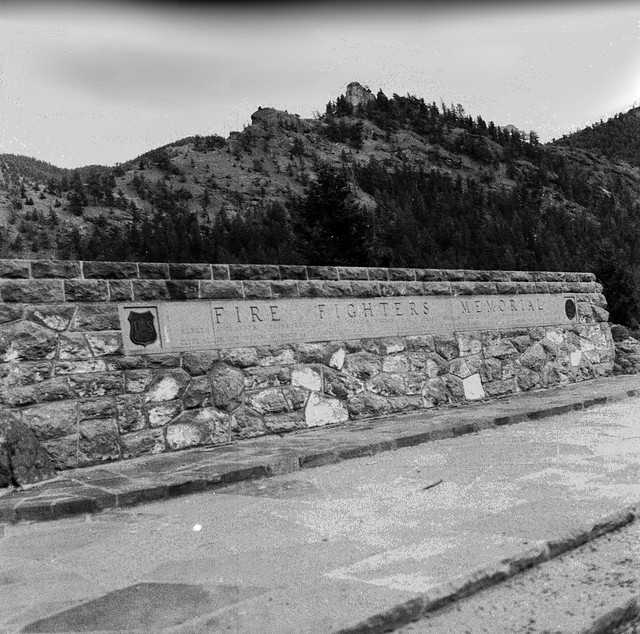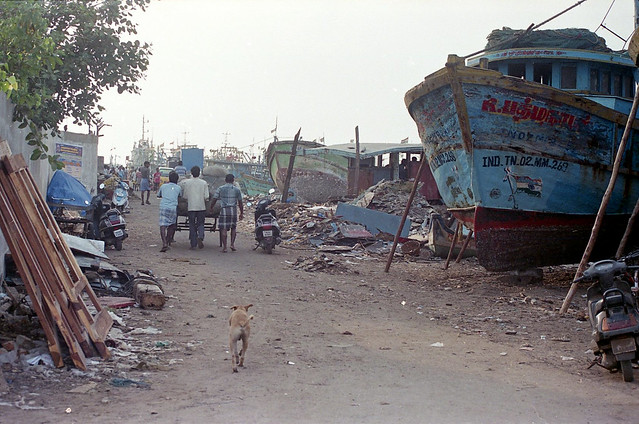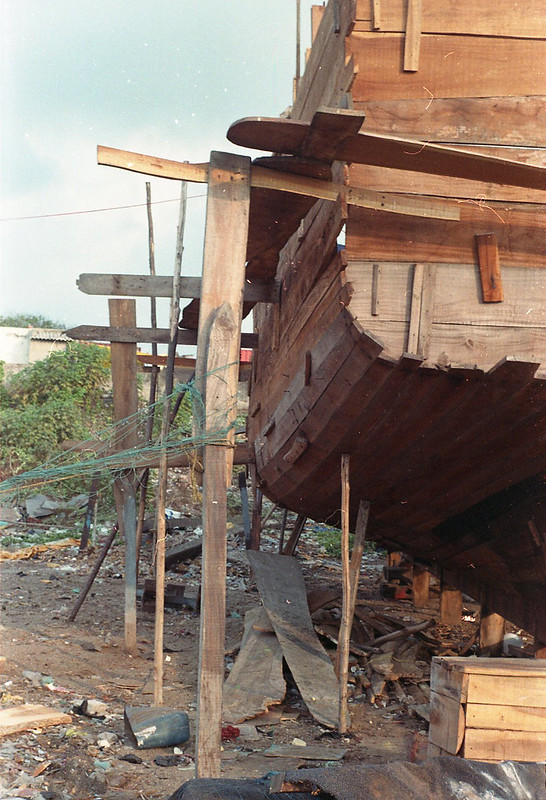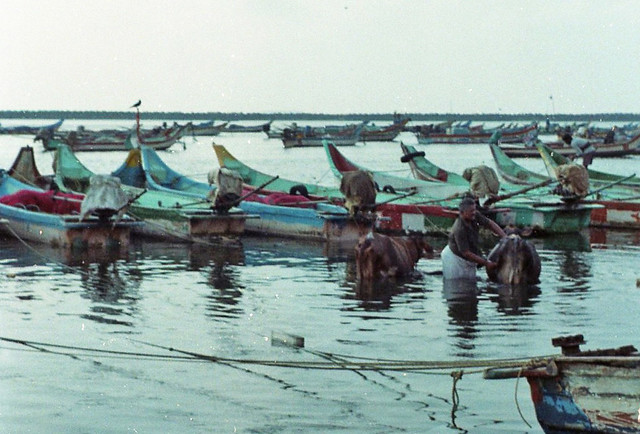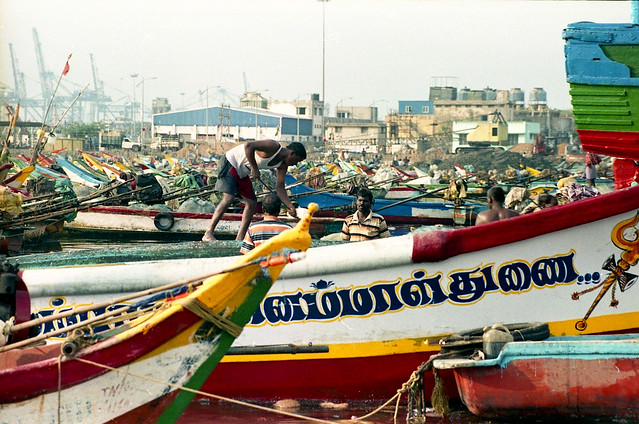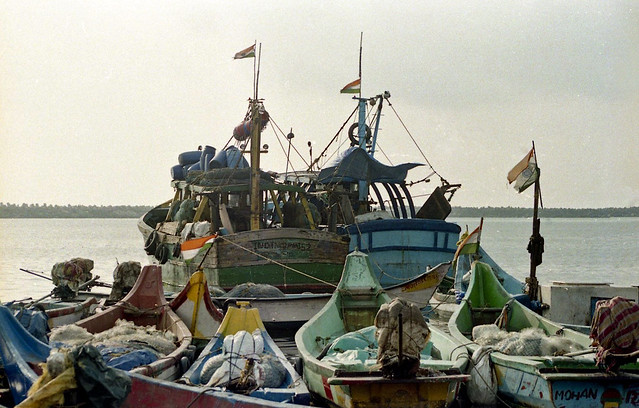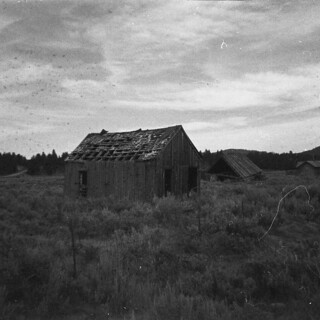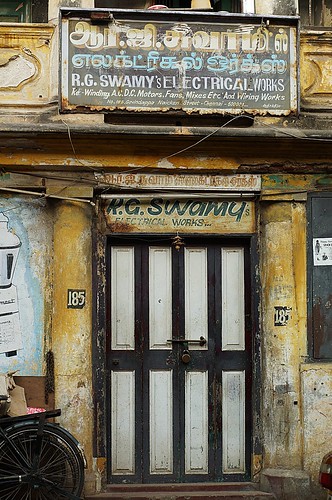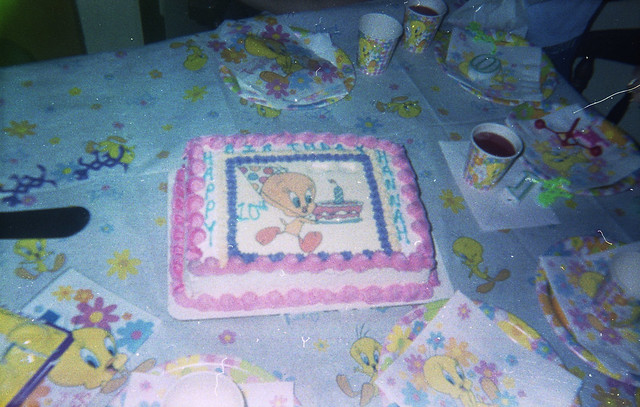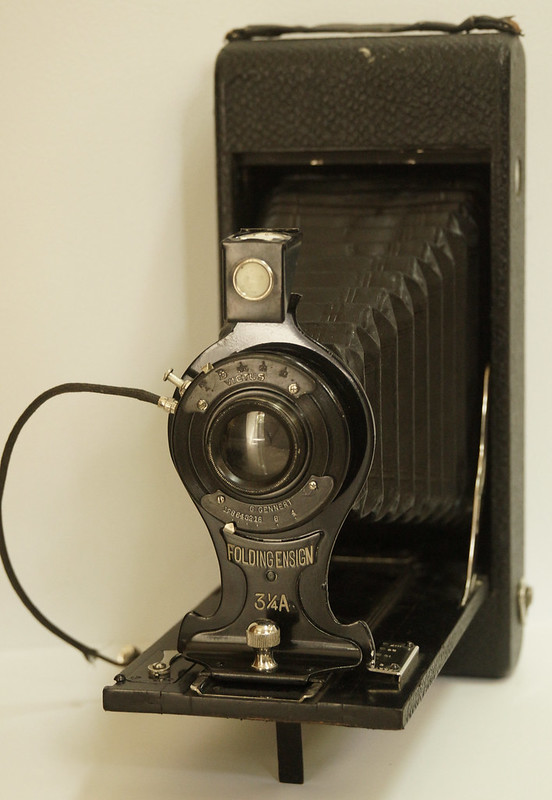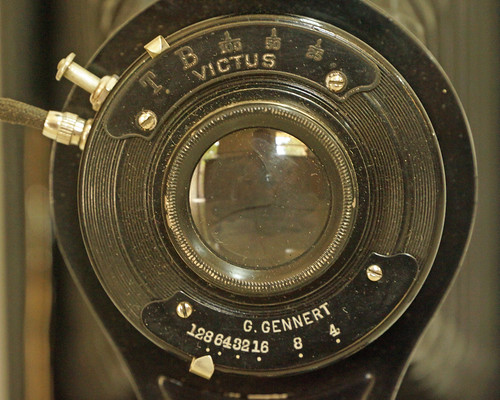This is the third installment (in what will eventually be 4) in a series of posts about a fascinating project I have been working on. Rather than the usual “found film” which I find undeveloped, this is a set of four rolls of already-developed photographs I have scanned and gradually restored over the past weeks.
The photographs are a window into a part of our military history that does not appear to be all that well-documented (and at times controversial), from the perspective of a group of infantry lieutenants serving in an engineer/boat unit in Korea, circa mid-1946 and for the next year or two.
There’s nothing marking the rolls to indicate the order in which they were taken; but they all appear to be somewhat different, and were probably taken throughout the photographer’s deployment.
This roll is a hodge-podge of photos taken in different locations with few identifying features. I like the shot above, which seems to have somehow been taken from directly overhead. There are a few large buildings which may still be in place in or near Incheon.
A former adjutant of the boat battalion belonging to the same regiment as the photographer – if not actually in the same battalion – describes his early impressions of the country:
I had limited contact with Koreans when I served in the boat battalion. A boat shore regiment has two elements. It has a boat battalion which runs the boats and keeps them repaired and then it had a port battalion which furnished the beach people. In our situation it did the stevedoring both on board ship and in the tidal basin. The ships would come close to the harbor. They couldn’t come into the tidal basin because that couldn’t take any more than a LST. A Baltic class freighter, the kind of thing the “Pueblo” was, could get in. Most of the supplies came on Liberty size ships and everything had to be lightered ashore. We ran the lighters and the port battalion provided all the stevedore troops. They, the port battalion, after the big exodus of World War II veterans, began to hire fairly large numbers of Koreans as stevedores, primarily. We used some of them for our maintenance operations. We had some wooden hull boats, some command boats, and the Koreans were very, very good shipwrights, good boat carpenters. I will never forget the first time I saw a Korean shipwright drive a long screw through the outer planking of one of our things and into the hull member with a power driver. He had a look of beatification on his face like nothing you ever saw. It would have taken him hours to get that thing in. We also hired them for kitchen help, for barrack cleaning, the donkey work in the motor pool. We didn’t hire very many skilled ones and didn’t come in contact with very many educated ones.
This photo of Korean stevedores loading the American ships is one of my favorites in the roll:
There is reason to believe that the military unit the photographer belonged to was stationed on the island of Wolmido, which is said to be a kilometer off the coast of Incheon – but with all of the dredging and terraforming that has taken place to transform the port and coastal areas, appears to be contiguous to the mainland. The photo below may be of the fishing harbor on the island at that time. There are few photos to compare from that time, and it’s almost useless to try and compare with modern photos as the landscape has been utterly transformed. In fact, Wolmido Island is now the setting for an amusement park, a modern boardwalk and countless other things to do.
The writer of the previous passage concerning Incheon – who would later go on to become an Ambassador to Korea – was not impressed with Incheon in the mid-1940s. He continued:
I thought at the time that Korea was hopeless as a society. It was this curious mixture of more or less 20th century and 15th century. You could smell it forty miles at sea — the so-called honey pits — the only fertilizer they had was human excrement. Honey wagons were all over the place. Our places were serviced with honey wagons. The agricultural tools that they used were all out of the remote, remote past. If you went up to Seoul you saw street cars and relatively modern buildings and that kind of thing, but in the countryside between Inchon and Seoul why agricultural and other methods were ox carts and that sort of thing were way, way out of date.
The people were not excessively friendly. I had a house on the side of a hill in Wome Do in what had been an old Japanese complex and summer resort. Our club had been the governor’s mansion. There were four hotels out there; we managed to burn them down. Each of our companies was billeted in one of these hotels which was joined together by wooden passageways with a long passageway out over the water to join a square pavilion where they had their parties, etc.
(photo from a previous roll)
But I lived on the hillside in one of the separate cottages which they also maintained. But we let the Koreans live in all of the others. But they were very aloof and there was no fraternization, which we respected mightily. If a man was looking for a woman he had to go up to Seoul, possibly because most of Inchon was off limits. Up to the time I left, there was no inter-marriage, no real fraternization of any sort.
Anyway, I did not conceive any great love or liking for the Korean people at that point. I really didn’t know any other than those we hired. My job didn’t put me in contact with any.
The photographer appears to have had more affection – and probably contact – with the Korean people at the time. As in other rolls, he showed an interest in photographing children.
He also appears to have worked with this interpreter, who appears 5 or 6 times on the roll.
She appears to have worked in the same office as this sergeant. I tried to zoom in a bit on the calendar to try and figure out the date of the photo, but it just gets blurry the more you zoom in.
Finally, there’s the guy I like to think of as the “First Sergeant” – who appears several times throughout the four rolls of photos. At all times, he is photographed in the same position – on his back, in bed. But anyone who has worked with First Sergeants knows, he probably managed to somehow keep things under control in spite of this – and kept his lieutenants out of trouble as much as he could. This is a great portrait:
For the rest of the roll, you can check out the complete album on Flickr.



